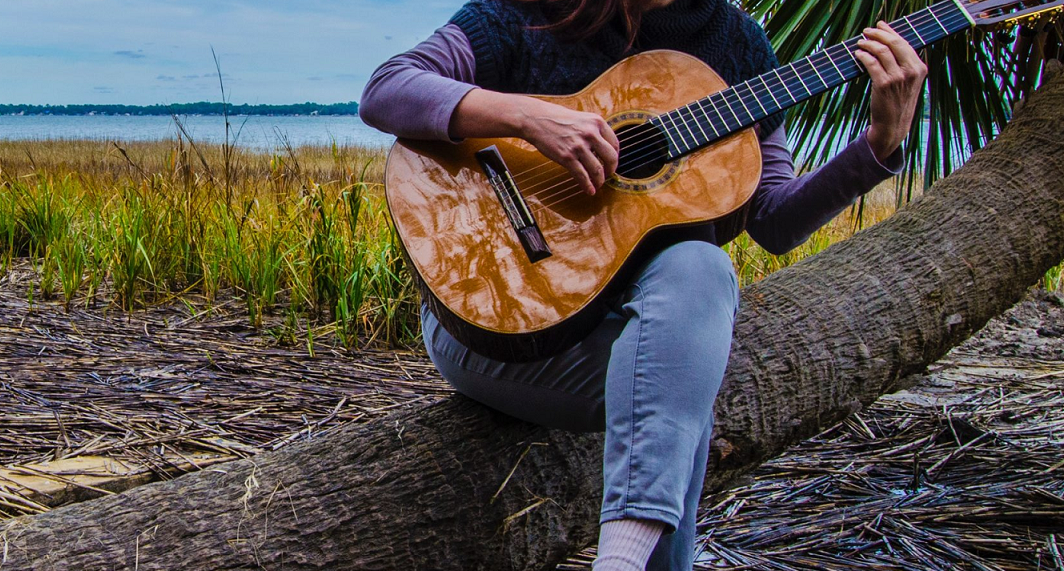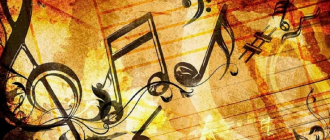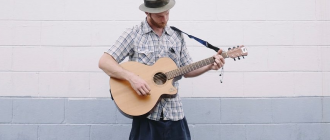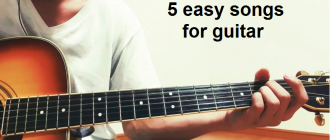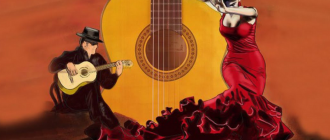There are many rhythms to play with guitar that can help us to improve with our instrument. In this post I want to show you 9 rhythms that I think will be useful for you to start noticing an improvement in your guitar playing.
List of Rhythms to play with guitar:
Rhythm in E minor with 4 chords
Each of the rhythms in this post has a purpose. In this case it will be to share some notes when we change chords. Notice that when we go from the E minor chord (Em) to the C chord (C) we share a note. The same happens when we play the G (G) and D (D) chord.

Rhythm using thumb and downward attack
In this rhythm to play on guitar we will use the thumb on the bass of the three chords below. We will do this on beat 1 and beat 3. It is important to keep in mind that the bass we use will depend on the chord we are playing. In the case of the G (G) chord we will play the sixth, in the next one the fifth string and in the following one the fourth.

Common progression with pop rhythm
This progression you see here is widely used. With it you can play countless songs. If you add to that that the chords of Lam (Am), Rem (Dm) and E7 (E7) usually go in many other songs, you will have a progression and a rhythm to play many more songs that you like.

Rhythms to play with guitar: beat on beats 2 and 4
There are countless other rhythms to play on guitar that are based on the pop rhythm we have seen in point 3. The only difference is the way they are played. If you compare the image of point 3 with the one below, you will realize that rhythmically it is the same, the difference is that we change strumming for beats.

Rhythms to play with guitar in D Major
In this guitar rhythm we have accentuation on beats two and four. See where the peaks are? (>) That’s an accent and it means that you should play that attack louder than the others. If we do this accent, we will get a different and more sophisticated sonority even though the rhythm is simple.

Rhythm in E major with suspended chord
For this rhythm we are going to use only two very similar chords. The only difference between the two is a single note, so just add the little finger on string 3, fret 2 to change the chord.
Here we will also accent on beats two and four and as you can see, we have the same ones as in all the other rhythms in this post but in different figures rhythmic as in all the other rhythms in this post but combined in different ways.

Two-chord rhythm with thumb on the first sixteenth note
When we are practicing a rhythm that is demanding for us it is best to play few chords. That’s why in this rhythm number 7 we are only going to play two chords, in order to focus more on the sixteenth note rhythm we have. What we want to achieve with this guitar rhythm is speed and dexterity when combining thumb and strumming.

Rhythm with accent on beats 2 and 4 and suspended chords
Here we will also play suspended chords and we will do it combining two rhythmic figures. The dotted eighth note and sixteenth note on beat 2 and the two eighth notes on beat 3. To this we must add the accentuation, which we have again in time two and time four.

Combination of arpeggios with ascending and descending rhythms
We have reached the last exercise in this series of 9 rhythms to play on guitar. Here we are going to combine arpeggios on beats one and two with up and down attacks on beats three and four.

That’s all, I hope these 9 rhythms to play on guitar will be of great help. If you have any questions leave them in the comments.
